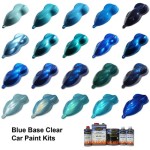Exploring the Many Colors of Flesh in Paintings
Representing human skin tone in painting presents a complex challenge for artists. The visible spectrum of skin tones is incredibly diverse, and accurately capturing this diversity requires a nuanced understanding of color theory, light, and shadow. Beyond mere representation, the artist's choices regarding flesh tones can contribute significantly to the overall mood, theme, and narrative of a work.
The perception of skin color is subjective and influenced by factors such as ambient light, surrounding colors, and cultural context. Therefore, artists must navigate these complexities to create believable and compelling depictions of the human form. Understanding the components that contribute to skin tone variation is crucial for achieving realistic and evocative results.
The Underlying Pigments of Skin
Human skin derives its color primarily from three pigments: melanin, carotene, and hemoglobin. Melanin is the primary determinant of skin darkness, with varying amounts and types present in different populations. It is produced by melanocytes and acts as a natural sunscreen, protecting the skin from ultraviolet radiation. Individuals with more melanin have darker skin tones, while those with less melanin have lighter skin tones. The type of melanin also influences skin tone, with eumelanin contributing brown and black hues and pheomelanin contributing red and yellow hues.
Carotene is a yellow-orange pigment found in subcutaneous fat and keratinocytes. It contributes to the overall warmth of the skin tone, particularly in individuals with lighter complexions. The presence of carotene can create a subtle yellowish undertone that artists must consider when mixing their colors. This pigment is obtained through diet, specifically from consuming fruits and vegetables rich in carotenoids.
Hemoglobin is the protein in red blood cells that carries oxygen. It contributes a reddish hue to the skin, particularly in areas where blood vessels are close to the surface, such as the cheeks and lips. The amount of oxygenated hemoglobin present influences the intensity of the redness. Blood flow and circulation also affect the appearance of the skin, with blushing or flushing resulting in increased redness.
The interplay of these three pigments, along with variations in skin thickness and translucency, creates the wide range of skin tones observed in humans. Artists must understand how these pigments interact to accurately represent the subtle nuances of skin color.
Color Mixing Strategies for Flesh Tones
Achieving believable flesh tones requires a thoughtful approach to color mixing. There is no single "flesh tone" color; rather, artists must create a palette of colors that accurately reflect the specific skin tone they are trying to represent. A common approach involves starting with a base color that is close to the overall skin tone and then adding subtle tints and shades to capture the variations in color and value.
A useful base palette often includes a warm yellow (such as yellow ochre or cadmium yellow light), a warm red (such as cadmium red light or alizarin crimson), and a blue (such as ultramarine blue or cerulean blue). White is added to lighten the mixture, while burnt umber or raw umber can be used to darken it. Titanium white is a common choice due to its opacity, which allows for greater control over the value of the mixture. Zinc white, being more transparent, can be used for glazing and creating subtle highlights.
When mixing flesh tones, it is important to consider the temperature of the light source. Warm light will enhance the warm tones in the skin, while cool light will enhance the cool tones. Artists should also pay attention to the surrounding colors, as these can influence the perceived color of the skin. For example, painting a figure against a blue background will make the skin appear warmer, while painting it against a red background will make it appear cooler.
The use of complementary colors can also be effective in creating realistic flesh tones. Adding a small amount of green to a reddish skin tone can neutralize the redness and create a more natural appearance. Complementary colors can also be used to create subtle shadows and highlights.
Layering colors is another important technique for achieving realistic flesh tones. By applying thin layers of color, artists can create a sense of depth and luminosity. This technique is particularly effective for capturing the translucent quality of skin. Glazing, which involves applying thin, transparent layers of color over a dry underpainting, can be used to create subtle variations in color and value.
Light, Shadow, and Form
The way light interacts with the skin is crucial to accurately representing form and creating a sense of depth. Understanding the principles of chiaroscuro, the use of strong contrasts between light and dark, is essential for portraying the three-dimensionality of the human figure. The highlights, midtones, and shadows on the skin surface reveal the underlying structure and contours.
The direction and intensity of the light source will significantly impact the appearance of the skin. Direct light will create strong highlights and shadows, while diffused light will create softer transitions. The angle of the light will also affect the shape and placement of the shadows. Artists must carefully observe how light interacts with the skin to create a convincing illusion of form.
The type of light also influences the color of the skin. Warm light will cast a yellowish or orange hue on the skin, while cool light will cast a bluish or greenish hue. Artists should consider the color temperature of the light source when mixing their colors.
Shadows are not simply the absence of light; they also have color. The color of the shadows will depend on the color of the light source and the surrounding colors. Shadows can be warm or cool, depending on the context. Artists should avoid using pure black to create shadows, as this can make the skin appear flat and lifeless. Instead, they should mix a variety of colors to create nuanced and realistic shadows.
Reflected light also plays an important role in creating believable skin tones. Reflected light is light that has bounced off of other surfaces and illuminates areas that would otherwise be in shadow. This reflected light can add subtle variations in color and value to the skin, creating a more complex and nuanced appearance. Observing and accurately representing reflected light is critical for creating a sense of realism.
Ultimately, painting realistic flesh tones requires a combination of careful observation, technical skill, and artistic intuition. By understanding the underlying pigments of skin, mastering color mixing techniques, and paying close attention to the interplay of light and shadow, artists can create compelling and evocative depictions of the human form.
The representation of flesh tones in painting is continually evolving, influenced by changing social attitudes and technological advancements in art materials. Exploring diverse artistic approaches and experimenting with different techniques allows artists to push the boundaries of representation and challenge conventional notions of beauty and identity.

Wax And The Color Of Flesh

Deciphering Bouguereau S Flesh Tones Muddy Colors

Zorn Palette Exploration Watercolor Mixing Art Lessons

Exploring The Soul Through Art S Series

Finding Color Harmony With Baxter Kirby Portrait Society Of Atlanta

Exploring Skin Colour Diversity For Kids Activities Multicultural Classroom

Touched By An Eagle Digital Insider

Exploring Identity How Do I See Myself Others Me Catching Readers Before They Fall

Tien S Top 10 Books On Color In Weaving The Handweaving Academy

Exploring Skin Tones Stephen Berry Art Watercolor Color Studies
Related Posts








